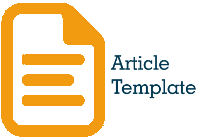THE USAGE OF AUGMENTED REALITY FOR MEDICAL MASK SELECTION USING FACE TRACKING
DOI:
https://doi.org/10.35457/antivirus.v16i1.1961Keywords:
augmented reality, face tracking, medical maskAbstract
When using a mask, appearance is essential for some people in supporting appearance and prioritizing comfort. However, when customer on trying masks, a prospective buyer must come directly to the pharmacy or shop. That’s can make consumers' time less efficient. In addition, trying a new mask also risks damaging the mask and an obligation to buy it. A mobile application with Augmented Reality features can help people see the appearance of masks on their facial contours via smartphones without trying it one by one. The application works by combining the mask model in the virtual world with the user's face in the real world captured by the user's smartphone camera. Literature study, needs analyze, application design, application development, and application testing are used in developing this application. Application development is carried out using the Augmented Reality face tracking method. From this application, mask model can be displayed right on the user's face on the android platform. In order to get optimal results, testing is done on the application by testing the application's compatibility when used on various Android devices and conducting a questionnaire to determine whether the application is well received by users using the User Acceptance Testing (UAT) and UAT results classified as good with a final score is 83 ,25%.
Downloads
References
J. T. Atmojo dkk., “PENGGUNAAN MASKER DALAM PENCEGAHAN DAN PENANGANAN COVID-19: RASIONALITAS, EFEKTIVITAS, DAN ISU TERKINI,” avicenna, vol. 3, no. 2, Art. no. 2, Okt 2020, doi: 10.36419/avicenna.v3i2.420.
K. T. Martono, “Augmented Reality Sebagai Metafora Baru dalam Teknologi Interaksi Manusia dan Komputer,” Jurnal Sistem Komputer, vol. 1, no. 2, Art. no. 2, 2011, [Daring]. Tersedia pada: http://eprints.undip.ac.id/40503/1/13-67-1-PB.pdf
R. S. Ernawati, E. W. Hidayat, dan A. Rahmatulloh, “Implementasi Teknologi Augmented Reality Sebagai Media Pengenalan Aksara Sunda Berbasis Android,” JuTISI, vol. 3, no. 3, Art. no. 3, Des 2017, doi: 10.28932/jutisi.v3i3.671.
I. Mustaqim, “PEMANFAATAN AUGMENTED REALITY SEBAGAI MEDIA PEMBELAJARAN,” Jurnal Pendidikan Teknologi dan Kejuruan, vol. 13, no. 2, Art. no. 2, 2019, [Daring]. Tersedia pada: https://ejournal.undiksha.ac.id/index.php/JPTK/article/view/8525/0
D. Tresnawati dan Muhamad Firzan Desfriansyah, “Rancang Bangun Media Pembelajaran Sistem Pernapasan Menggunakan Marker-Based Augmented Reality,” Jurnal Algoritma, vol. 17, no. 2, Art. no. 2, Feb 2021, doi: 10.33364/algoritma/v.17-2.402.
R. Alifah, D. A. Megawaty, dan M. N. D. Satria, “PEMANFAATAN AUGMENTED REALITY UNTUK KOLEKSI KAIN TAPIS (STUDY KASUS: UPTD MUSEUM NEGERI PROVINSI LAMPUNG),” Jurnal Teknologi dan Sistem Informasi, vol. 2, no. 2, Art. no. 2, 2021, [Daring]. Tersedia pada: http://jim.teknokrat.ac.id/index.php/sisteminformasi/article/view/831
M. R. Almasyariqi, S. Rani, dan B. Suranto, “Rancang Bangun Aplikasi Berbasis Augmented Reality untuk Virtual Fitting Room Frame Kacamata,” Seminar Nasional Aplikasi Teknologi Informasi (SNATi), hlm. B-86-B-90, 2018, [Daring]. Tersedia pada: https://journal.uii.ac.id/Snati/article/view/11161
M. Muntahanah, R. Toyib, dan M. Ansyori, “PENERAPAN TEKNOLOGI AUGMENTED REALITY PADA KATALOG RUMAH BERBASIS ANDROID (STUDI KASUS PT. JASHANDO HAN SAPUTRA),” pseudocode, vol. 4, no. 1, hlm. 81–89, Feb 2017, doi: 10.33369/pseudocode.4.1.81-89.
A. D. Pratiwi, “Gambaran Penggunaan Masker di Masa Pandemi Covid-19 Pada Masyarakat di Kabupaten Muna,” Prosiding Nasional Covid-19, hlm. 52–57, Jun 2020, Diakses: Sep 29, 2021. [Daring]. Tersedia pada: https://www.ojs.literacyinstitute.org/index.php/prosiding-covid19/article/view/33
S. A. Munthe, J. Manurung, dan L. R. V. Sinaga, “PENYULUHAN DAN SOSIALISASI MASKER DI DESA SIFAHANDRO KECAMATAN SAWO SEBAGAI BENTUK KEPEDULIAN TERHADAP MASYARAKAT DITENGAH MEWABAHNYA VIRUS COVID 19.,” Jurnal Abdimas Mutiara, vol. 1, no. 2, Art. no. 2, Sep 2020, Diakses: Sep 29, 2021. [Daring]. Tersedia pada: http://114.7.97.221/index.php/JAM/article/view/1322
Y. P. Yuda dan M. N. L. Azis, “3D modeling the gamelan of saron as a documentation of cultural heritage preservation efforts,” J. Phys.: Conf. Ser., vol. 1375, hlm. 012036, Nov 2019, doi: 10.1088/1742-6596/1375/1/012036.
D. Setiawan, M. Suyanto, dan H. A. Fatta, “Analisa dan Perancangan 3D Candi Cetho Menggunakan Metode Polygonal Modeling,” JURNAL EKONOMI DAN TEKNIK INFORMATIKA, vol. 4, no. 2, Art. no. 2, Des 2017, Diakses: Sep 29, 2021. [Daring]. Tersedia pada: http://e-journal.polsa.ac.id/index.php/jneti/article/view/66
K.-T.-U.- Paka, “PANDUAN DOKUMEN USER ACCEPTANCE TEST (UAT),” hlm. 4, [Daring]. Tersedia pada: https://dac.telkomuniversity.ac.id/wp-content/uploads/2015/06/PAKA06A-Panduan-User-Acceptance-Test-UAT-20170410.pdf
Downloads
Published
Issue
Section
License
Authors who publish with this journal agree to the following terms:
- Copyright on any article is retained by the author(s).
- Author grant the journal, right of first publication with the work simultaneously licensed under a Creative Commons Attribution License that allows others to share the work with an acknowledgement of the work’s authorship and initial publication in this journal.
- Authors are able to enter into separate, additional contractual arrangements for the non-exclusive distribution of the journal’s published version of the work (e.g., post it to an institutional repository or publish it in a book), with an acknowledgement of its initial publication in this journal.
- Authors are permitted and encouraged to post their work online (e.g., in institutional repositories or on their website) prior to and during the submission process, as it can lead to productive exchanges, as well as earlier and greater citation of published work.
- The article and any associated published material is distributed under the Creative Commons Attribution-ShareAlike 4.0 International License











